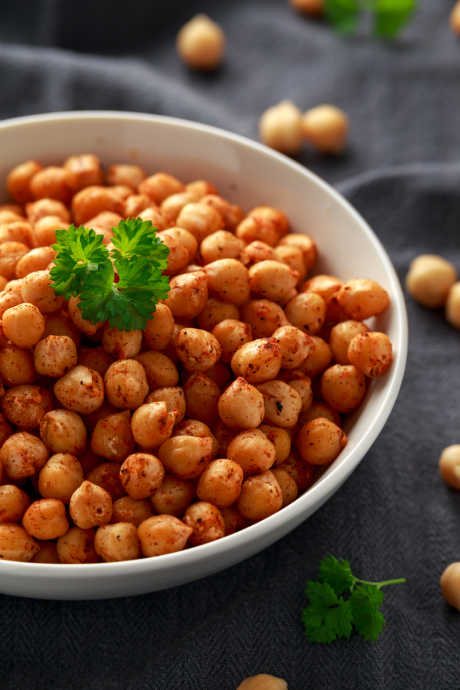Roasted Chickpeas: Turn Canned Beans Into a Tasty Snack
Posted by Julie on Sep 2nd 2020
A big bag of pretzels or chips has its place, but sometimes it’s worth the effort to whip up a homemade snack. We’re big fans of putting your own spin on tasty snacks like pumpkin seeds, pita chips, and popcorn. In this post, we’re talking about chickpeas (also known as garbanzo beans). These protein-packed legumes are the base of hummus, and they’re also a popular ingredient in pastas, soups, and salads. But you can also roast and season them. Check out the five top tips we found for turning a can of beans into a salty, spicy snack.
Tip #1: Dry Your Chickpeas Thoroughly
The first tip is also the top tip. Every source we reviewed emphasized the importance of drying your chickpeas before roasting them. Pop open the can, rinse the beans, and then dry them. You can use a clean dish towel, or you can let them sit out on a towel or a baking tray to air dry. You can also do both. But make sure they are dry to the touch before moving forward. Dry chickpeas will become crispy roasted chickpeas.
Tip #2: Remove the Skins
While this tip isn’t nearly as crucial as the first one, we know from our experience with chickpeas that it’s worthwhile. Not all of our resources address the matter of chickpea skins. Love and Lemons advises picking off any loose skins before roasting, but only Minimalist Baker notes the importance of getting rid of all the skins.

Why bother? First, the skins will absorb the oil, rather than the chickpeas themselves. They’re also likely to burn or get stuck in your teeth. Finally, Plum Deluxe maintains skinned chickpeas have more flavor when they’re roasted.
Tip #3: Toss Your Chickpeas in Oil
Now that your chickpeas are dry and free of skins, add olive oil. Of course, the amount depends on how many chickpeas you’re roasting, but it’s also a matter of taste. Bon Appetit calls for a couple tablespoons of oil for one can of chickpeas. The Kitchn also cautions against using a light hand when pouring olive oil. Others advise using only a teaspoon or two. You may need to experiment a bit. Regardless, make sure your chickpeas are evenly coated with oil before adding seasoning.
Tip #4: Salt or Spice Up Your Chickpeas
You can roast chickpeas in oil alone, but they will be far more interesting if you add seasoning. You can go as simple as plain kosher salt, or make your own homemade spice blend. You can use pre-made herb or spice blends too, which are easily found at grocery stores. Because chickpeas don’t have an overwhelmingly savory flavor on their own, you can also try sweet options like a cinnamon-sugar mixture. In that case, toss them with vegetable oil instead of olive oil.

You can add salt or sugar before roasting, but some herbs and spices are best added right when chickpeas come out of the oven. The intense heat of the oven can burn delicate herbs and spices. You’ll be much happier with the outcome if you wait until the chickpeas are finished roasting.
Tip #5: Bake Your Chickpeas Low and Slow
Here’s where we opted to go with the outlier, rather than stick with the majority of our sources. Nearly every recipe we reviewed called for an oven temperature of 400ºF. The exception was Minimalist Baker, who went with an oven temperature of 350ºF and a baking time of 45-50 minutes. She explained how she found that higher temperatures crisped only the outside of the beans, leaving the centers soft. Baking for a longer time at a slightly lower temperature resulted in chickpeas that were crunchy through and through. We haven’t yet put her recipe to the test ourselves, but we see how it makes sense. Bon Appetit also recommends shaking the pan halfway through the baking time to ensure your chickpeas roast evenly.
Finally, once you’ve finished roasting your chickpeas, eat them the same day. The flavor endures, but the texture is much better when eaten right away. In fact, if you do store them, however briefly, don’t put them in a sealed container or
in the refrigerator. Unlike other crunchy snacks, roasted chickpeas do better with a little air circulation.
 Free shipping over $49
Free shipping over $49










